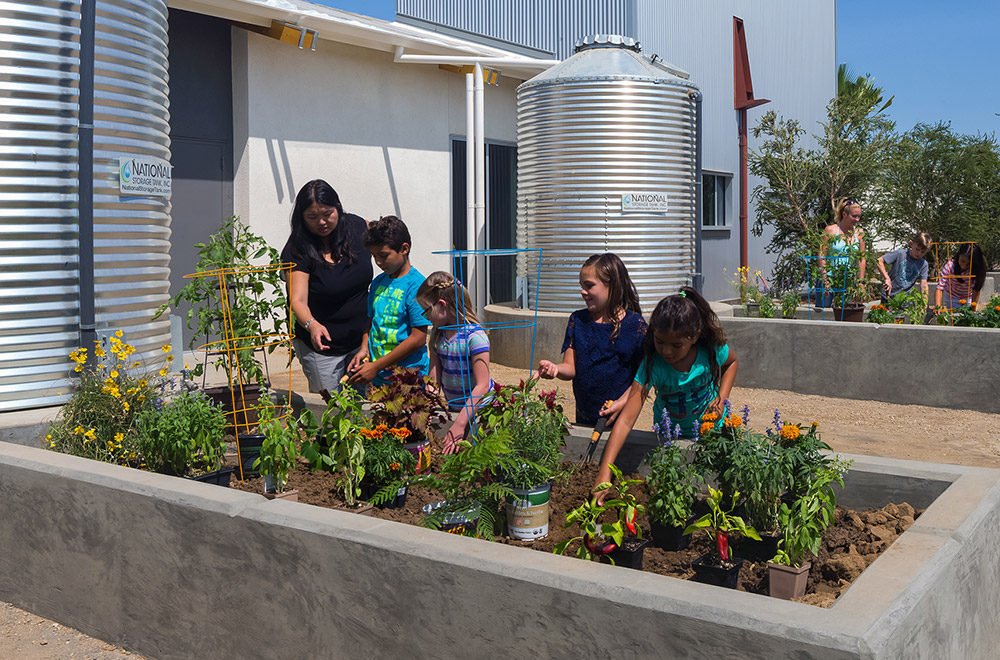By Lisa Sawin
We recently lost a champion in the sustainable movement. Ray Anderson, founder and Chairman of Interface, passed away last week from cancer at the young age of 77. Ray Anderson’s clear mission and approach to sustainable business established Interface as the worldwide leader in design, production, and sales of environmentally responsible modular carpet, and will continue to inspire us beyond his lifetime and 2020 goal to summit the metaphorical Mount Sustainability.
“In 1994 founder Ray Anderson received a dramatic wake-up call—something he described as a spear in the chest. He realized there was an urgent need to set a new direction for Interface. He challenged us to pursue a bold new vision: To be the first company that, by its deeds, shows the entire industrial world what sustainability is in all its dimensions: people, process, product, place and profits—and in doing so, become restorative through the power of influence.” (from Interface’s website www.interfaceglobal.com)
From there it grew into a framework known as, “…Mount Sustainability and the Seven Fronts: To our founder and Chairman Ray Anderson, the journey to a fully sustainable company would be like summiting ‘a mountain higher than Everest’ – difficult, yes, but with a careful and attentive plan, not impossible.”
– Front 1 – Eliminate Waste: Eliminate all forms of waste in every area of business.
– Front 2 – Benign Emissions: Eliminate toxic substances from products, vehicles and facilities.
– Front 3 – Renewable Energy: Operate facilities with 100% renewable energy.
– Front 4 – Close The Loop: Redesign processes and products to close the technical loop using recovered and bio-based materials.
– Front 5 – Resource Efficient Transportation: Transport people and products efficiently to eliminate waste and emissions.
– Front 6 – Sensitize Stakeholders: Create a culture that uses sustainability principles to improve the lives and livelihoods of all of our stakeholders–employees, partners, suppliers, customers, investors and communities.
– Front 7 – Redesign Commerce: Create a new business model that demonstrates and supports the value of sustainably based commerce.
As Ray’s mission spread throughout every facet of the company it became known as Mission Zero™. Zero being the amount of negative impact they intended on having on the environment by the year 2020.
The path Ray set out on is not easy and Interface has been faced with and will continue to be faced with challenges between now their intended summit date of 2020 (in addition to the loss of their great leader). To put their journey in perspective, Mount Everest is 20,320 feet above sea level—simply put, the path to sustainability is not a mere day hike.
Interface is currently in their 17th year of climbing the metaphorical Mount Sustainability. During this time, they have not only reduced their impact on the environment, they have redefined Interface to be a company with a clear sense of purpose and employees who are inspired and encouraged to be innovators. In part, their success is due to the way they approach these challenges. For example, when presented with the challenge of eliminating the use of virgin materials in their carpet they turned to innovation. By creating a recycling process named ReEntry®, Interface became the first carpet manufacturer to implement a process for the “clean separation” of carpet fiber from backing, allowing for a maximum amount of post-consumer material to be recycled into new products with minimal contamination. Bringing them one step closer to closing the loop, Front – 4.
When setting out on their journey known as Front 3 – Renewable Energy, they realized the importance of monitoring their energy use. They measured and collected the energy data, specifically at their Scherpenzeel Factory, so they were able to prominently display the ‘real time’ energy use of the building for all occupants to see, educating and inspiring the occupants on how they can be part of the energy reduction solution. As a result of this and other energy saving measures, their “Total energy use at (their).. global factories is down 43% per unit of product since 1994” and they currently supply 30% of their total energy through renewable energy. However, 30% over 17 years means they will need to at least triple their efforts over the next 9 years on this ‘Front‘ alone.
What inspires me, in addition to the benefit of eliminating a company’s negative impact on the environment, is the impact of a clear vision, inspiring leader, and a plan of action with measurable goals. It has taken something like Mission Zero™ and Mount Sustainability from what seems like an unachievable dream and nurtured it from a single person’s vision, to a company identity, to a movement that could change the world.
The path to sustainability, whether it be goals outlined by Ray Anderson that are similar goals we strive for everyday in architecture, is challenging. I would rather be challenged and involved in constant dialogue about what steps we can take to improve our approach to design and strive towards a better built environment. This far outweighs the alternative, which is realizing it is the future and due to inaction, the only mountains we have are, well, metaphorical.
Ray Anderson, I thank you for your courage to not only think big, but to act big.
Article references and additional information regarding Interface’s mission, innovations, and challenges:
Mission: http://www.interfaceglobal.com/Sustainability/Interface-Story.aspx
Innovations: http://www.interfaceglobal.com/Sustainability/Our-Progress/Innovations.aspx
Energy: http://www.interfaceglobal.com/Sustainability/Our-Progress/Energy.aspx
Climate: http://www.interfaceglobal.com/Sustainability/Our-Progress/Climate.aspx
Challenges: http://www.interfaceglobal.com/Sustainability/Our-Challenges.aspx
